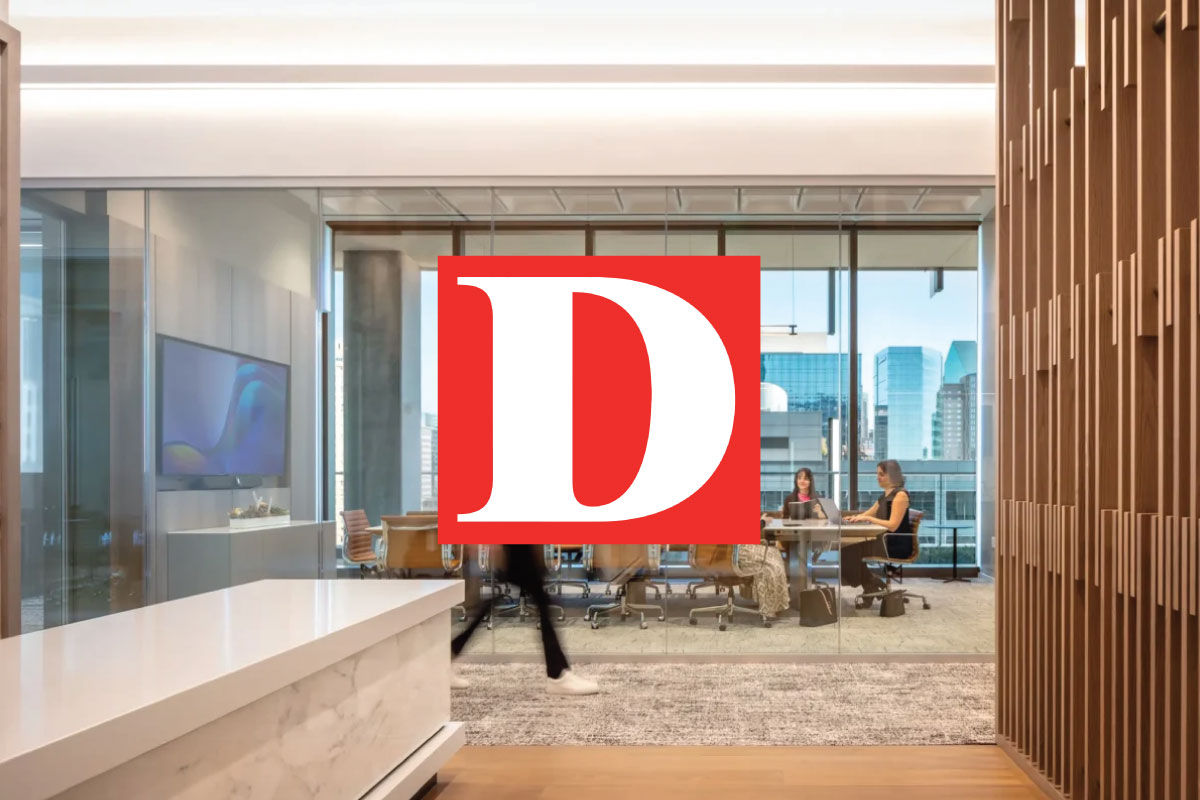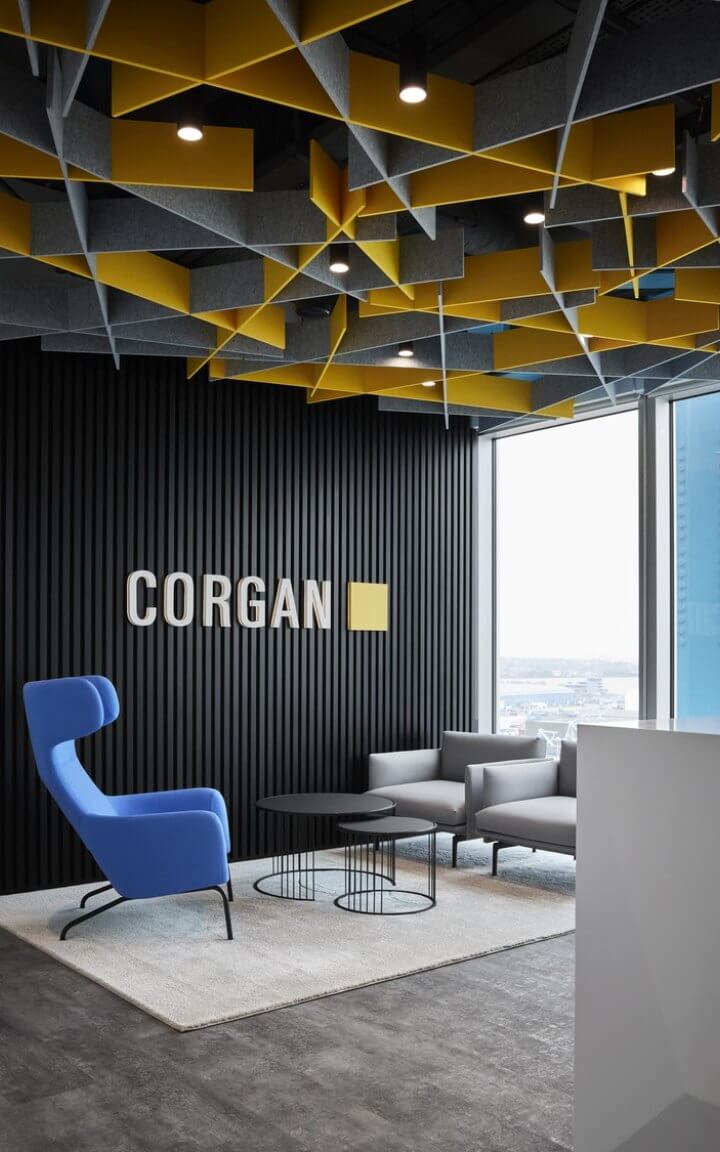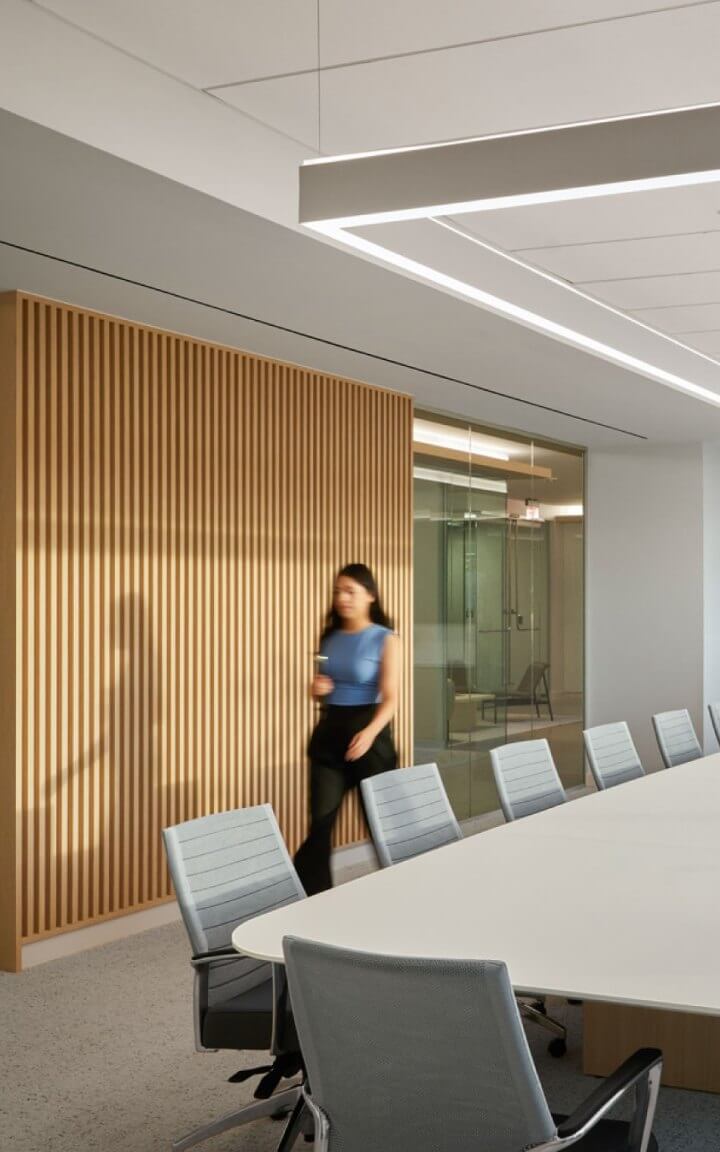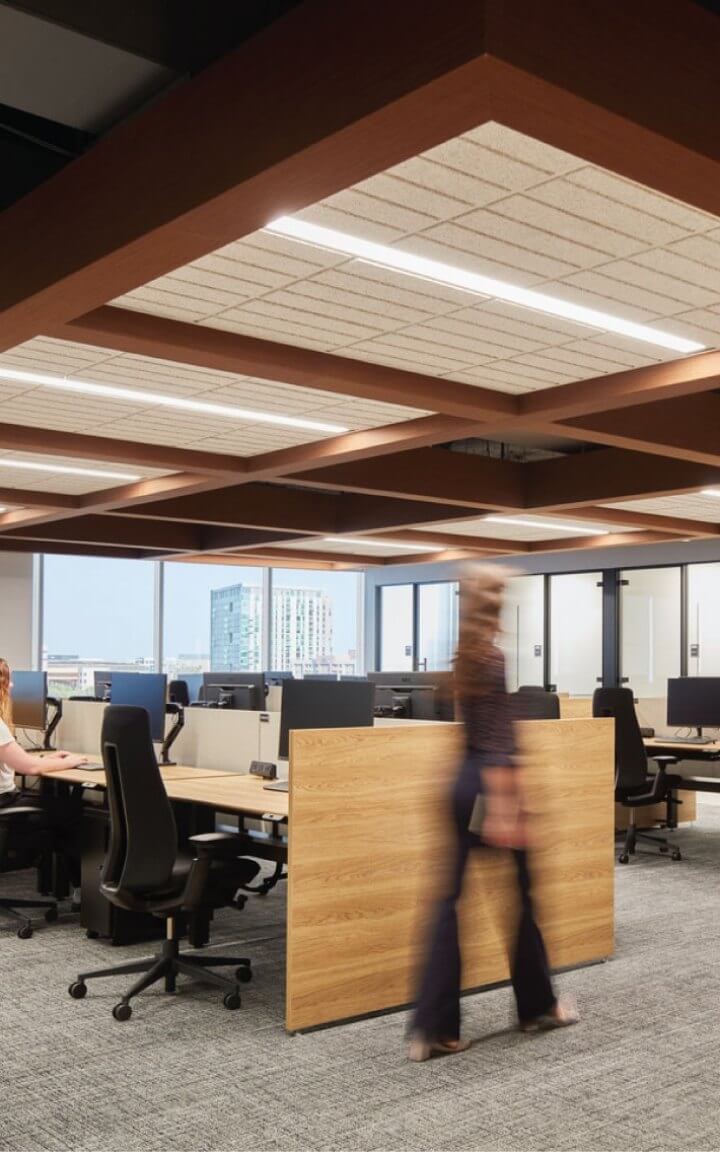An Interior Designer's Take on Return-to-Work Strategies - D CEO Magazine

An Interior Designer’s Take on Return-to-Work Strategies
It is critical to make the workplace a tool that supports engagement, writes Corgan President Lindsay Wilson.
Few things in our world today could have more expectations placed on it than the office. This year we have seen notable company leaders — after years of hoping staff would willingly return to the office — make a public proclamation that the workplace is THE BEST place to get work done and call their people back to the office. Many are doing so with promises of “enhanced collaboration and connection,” and that is immediately placing expectations in employees’ minds.
Change in the workplace isn’t new, but it has historically been driven by new technology changing the way we work. The demands on the workplace today are coming from all sides, but are largely driven by human expectation. These expectations are conveyed by organizations in statements like “we will earn the commute,” “our workplace is meant for connection,” and “our office is designed for collaboration and innovation.”
On the user side, employees expect the comforts of home, ubiquitous technology, and their individual needs being addressed—not to mention higher expectations of perks and great design. Employers have goals of lowering attrition, attracting new talent, and seeing increases in engagement and financial performance. All of these expectations are to be met by a place, right? A thoughtful, sustainable, well-designed collection of stuff, powered by the latest technology that looks really good and takes everyone’s preferences into consideration.
Woah—I’m stressed out for this place (and its designers).
It’s a triumvirate that holds the key to success — the place, the people, and the policies work together to make the workplace a tool that supports engagement. Engagement is at the heart of what being the office is all about—connection, mentorship, and culture. So, what advice can I, as an interior designer and workplace strategist, give leaders who are wrestling with how their workplaces can rise to the occasion?
Create clarity. Leaders shape the perspectives of their organizations. Get clear on the culture you have in your workplaces and if you want to make any changes.
The purpose of your place. In your company, what needs to happen at the physical office? Is the focus on launching new projects and onboarding team members, or is it client service, ongoing training, and mentorship? Is your workplace for heads-down work with high confidentiality? What happens in the office versus in other places? It is critical to know the answer to this question.
What is holding you back? Outline what your organization needs to make a decision on culture change, on policy change, or to define the workplace of your future. Leaders are interested in what other organizations are doing. It is good to understand what competitors or other companies in your community are doing, but how does that information impact your organization’s decision making? Do you need metrics or input from leaders?
At Corgan, we have countless conversations with CEOs of companies big and small and we feel it is literally the “great expectation” that is being placed on the workplace that is holding back decision making. The old analysis paralysis. It can feel easier to just keep everything as it is–people are used to it, and the status quo doesn’t ruffle any feathers. Not to mention the investment is tremendous. It’s no secret that everything costs more and that there are high expectations for technology and spaces that look and feel great. But the cost of inaction is also real. Employee expectations aren’t likely to go backwards, and the employees of tomorrow are learning in educational settings that are meeting the demands for cutting edge technology and collaboration–they are magnets for people. The importance of relationships and social interaction at work is increasing, bolstered by research that highlights the importance of interpersonal connections at work on our well-being. Little should be left to chance–the stakes are high.
This CRE opinion piece was written by Corgan President Lindsay Wilson.





